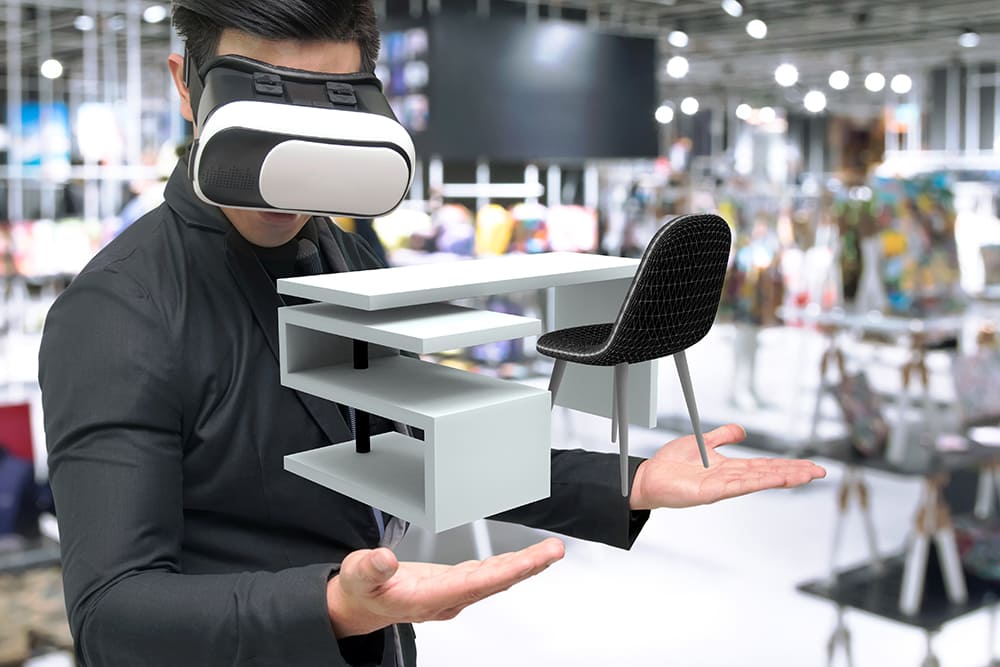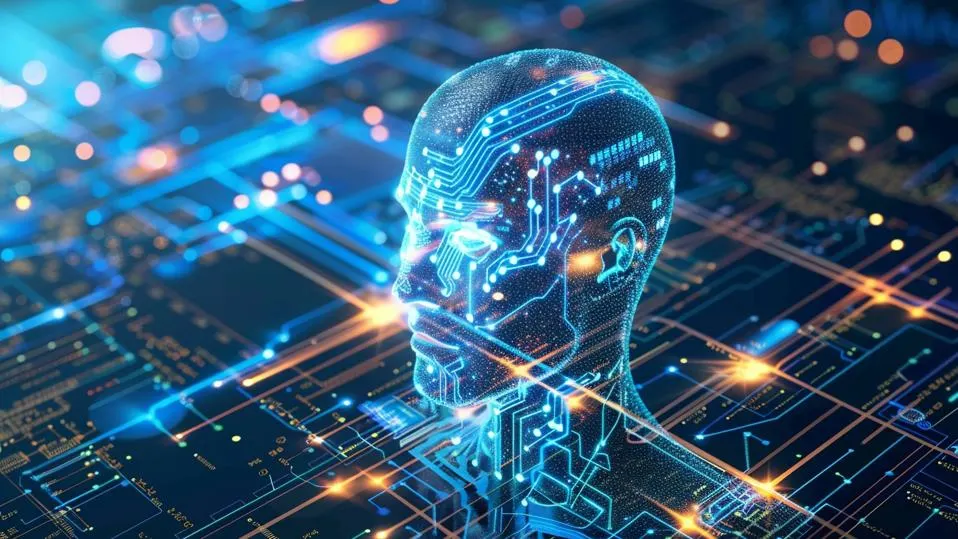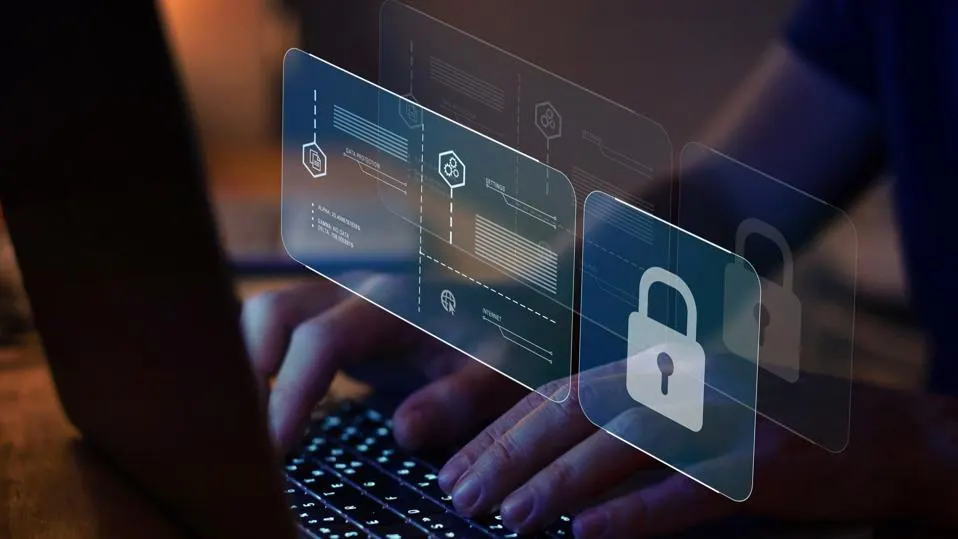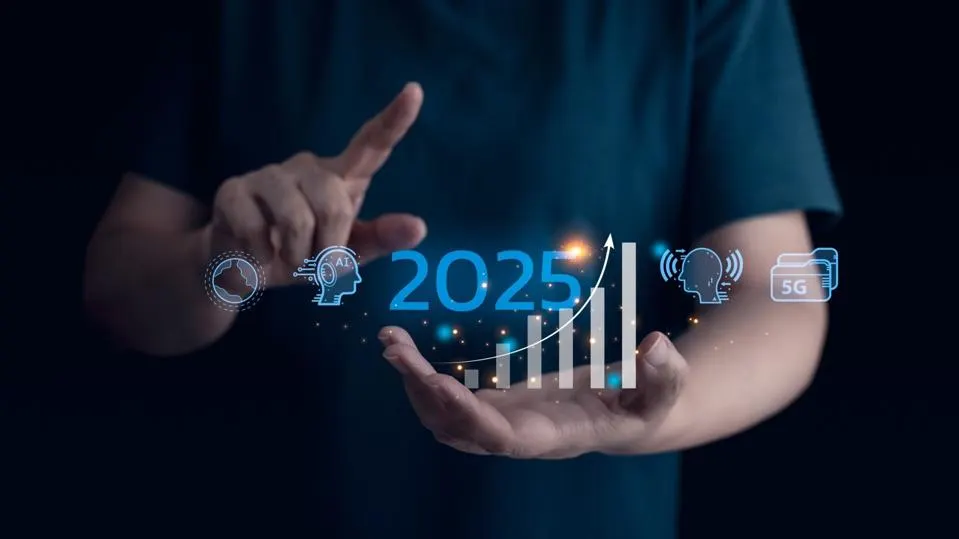10 Best Examples Of Augmented And Virtual Reality In Retail
20 September 2021
In my book, “Extended Reality In Practice,” I highlight over 100 examples of how augmented reality and virtual reality are transforming our world.
In this post, I want to take a closer look at the retail sector and give you some of my favourite examples of how AR and VR are being used to improve conversion rates and make the customer journey more interesting.

Even before the pandemic hit, retail was ripe for an overhaul, particularly the online shopping experience. For example, there’s a well-known reason why people don’t typically buy furniture online: It’s because it’s tricky to judge the size of a couch, end table, or dresser without seeing it in person. But now, retailers are using AR to help customers digitally project furniture into their homes, so customers can accurately judge whether an item is the right size and style for their space.
Similar things are now possible for things like glasses, jewellery, clothes, shoes, or anything else shoppers want to buy.
Here are my ten favourite examples of how VR and AR are being used in the retail sector.
1. Nike uses augmented reality and virtual reality in their physical stores. Customers can scan items like shoes or clothing to view information, or they can enter a VR world to experience the different steps in Nike's supply chain so they understand how and where items are being made.
2. IKEA has developed The Place App, which allows shoppers to use augmented reality with their smartphone camera to place furniture items into their homes so they can visualize exactly how the item will look in their setting.
3. Warby Parker’s customers can use AR to try on glasses from the comfort of their homes, so they can pick out the perfect frames.
4. L'Oreal now offers augmented reality-powered makeup try-on experiences, delivered in collaboration with Facebook. Customers can experiment with the world’s leading beauty brands, such as Maybelline, L’Oréal Paris, Lancôme, Giorgio Armani, Yves Saint Laurent, and Urban Decay.
5. Luxury watch retailer WatchBox uses AR to let customers try on different sizes of watches to pick out the perfect one and make sure it looks great on their wrist.
6. FaceCake has created an Infinite Virtual Closet that allows users to create and build a dream closet with aspirational wardrobe and jewellery items, then virtually try them on. The AI-driven shopping platform also gives shoppers curated style recommendations. Imagine being able to virtually try on earrings and actually being able to see them dangling from your ears!
7. BMW’s augmented reality experiences allow car shoppers to go into showrooms and customize cars with different colours or styles using their tablets or phones. Or they can put on virtual reality goggles and experience what it’s like to drive the cars, so they understand their options and can make the perfect choice for their new vehicle.
8. Apple brought their physical retail stores home during the pandemic using AR technology to showcase their products. Shoppers can use AR Quick Look for new iPhone or iMac models, so you can see what they look like in your space or in your hand.
9. Toms, the shoes and apparel company, has installed virtual reality in hundreds of their stores across the world to give customers the ability to transport themselves to Peru. Toms donates $1 of every $3 they make to local people who play a part in their supply chain – and customers can experience the impact of that initiative via virtual reality.
10. Fashion retailer Asos now has simulated models on the website that you can dress up using AR, so you can see how garments look on different body types. In the future, we will likely have our own avatars, so we can have our bodies scanned and try out our own avatars in the digital world.
These are some of the most innovative, leading-edge examples of augmented and virtual reality in retail.
Related Articles
The Simple ChatGPT Trick That Will Transform Your Business AI Interactions
I believe ChatGPT and other generative AI tools can help pretty much any business.[...]
The Third Wave Of AI Is Here: Why Agentic AI Will Transform The Way We Work
The chess pieces of artificial intelligence are being dramatically rearranged. While previous iterations of AI focused on making predictions or generating content, we're now witnessing the emergence of something far more sophisticated: AI agents that can independently perform complex tasks and make decisions.[...]
How Generative AI Will Change Jobs In Cybersecurity
Ensuring robust cybersecurity measures are in place is more important than ever when it comes to protecting organizations and even governments and nations from digital threats.[...]
The 10 Most Important Banking And Financial Technology Trends That Will Shape 2025
As technological disruption and economic uncertainty continue to reshape the financial landscape, alongside dramatic shifts in consumer behavior and regulatory requirements, 2025 promises to be both challenging and opportunistic for banking and financial services.[...]
The 6 Most Powerful AI Marketing Trends That Will Transform Your Business In 2025
The quiet hum of AI servers is rapidly drowning out the traditional drumbeat of marketing departments worldwide.[...]
AI Everywhere – Scaling AI In The Cloud With Intel® Xeon®6
Today, the omnipresent AI that we’re starting to take for granted has become a critical tool for business.[...]
Sign up to Stay in Touch!
Bernard Marr is a world-renowned futurist, influencer and thought leader in the fields of business and technology, with a passion for using technology for the good of humanity.
He is a best-selling author of over 20 books, writes a regular column for Forbes and advises and coaches many of the world’s best-known organisations.
He has a combined following of 4 million people across his social media channels and newsletters and was ranked by LinkedIn as one of the top 5 business influencers in the world.
Bernard’s latest book is ‘Generative AI in Practice’.










Social Media